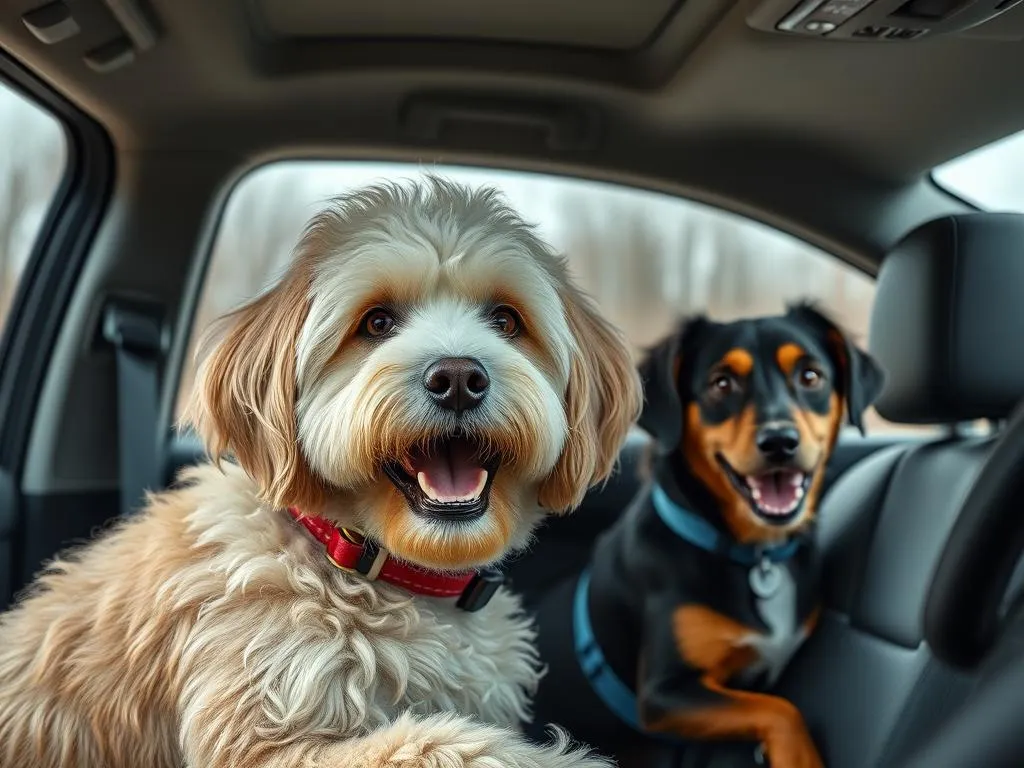
Introduction
Imagine it’s a beautiful sunny day, and you’re heading out on a road trip with your furry friend. As you buckle up and start the car, your dog jumps excitedly into the front seat, wagging its tail in anticipation. It’s a common scene that many pet owners can relate to. But as charming as it may seem, you might find yourself questioning: can dogs ride in the front seat safely?
Understanding whether dogs can safely ride in the front seat is crucial for several reasons. Not only does it concern the well-being of your pet, but it also impacts your safety and that of other road users. In this article, we’ll explore the risks associated with dogs in the front seat, the legal considerations that come into play, insights into dog behavior, and best practices for traveling with your beloved canine companion.
Understanding the Risks of Dogs Riding in the Front Seat
Safety Concerns for Dogs
When considering if dogs can ride in the front seat, the first aspect to evaluate is the safety of your pet. Here are the key risks to keep in mind:
-
Potential for Distraction to the Driver: A dog in the front seat can easily become a distraction. Whether it’s their curiosity about passing cars or their desire to be pet, their movements can divert your attention from the road.
-
Risk of Injury During Sudden Stops or Accidents: In the event of a sudden stop or collision, an unrestrained dog in the front seat can be thrown forward, causing severe injury or even death. The impact of even a minor accident can be devastating for small or large dogs alike.
-
Exposure to Airbags: Airbags are designed to protect humans during a crash, but they can be dangerous for pets. If deployed, an airbag can strike a dog with significant force, leading to serious injuries or fatalities.
Safety Concerns for Humans
The presence of a dog in the front seat doesn’t just pose risks for the pet; it can also jeopardize human safety. Consider the following:
-
Impact on Driver Focus: A dog moving around in the front seat can lead to distracted driving, which is a leading cause of accidents. If your dog is anxious or overly excited, it can be challenging to maintain full concentration on the road.
-
Potential for Accidents Caused by an Unruly Pet: An excited dog may jump around, bark, or even try to climb into your lap while you’re driving. This behavior can cause you to lose control of the vehicle, dramatically increasing the chances of an accident.
Legal Considerations
State Laws and Regulations
When it comes to whether dogs can ride in the front seat, various state laws and regulations play a significant role. While there are no universal laws prohibiting dogs from riding in the front seat, many states have specific regulations regarding pet transportation.
For instance, some states require that pets be properly restrained while in vehicles to prevent distraction and ensure safety. It’s essential to familiarize yourself with the laws in your state or any state you plan to visit, as regulations can vary widely.
Consequences of Non-Compliance
Ignoring the laws regarding pet transportation can lead to several consequences:
-
Fines and Penalties: If caught with an unrestrained dog in the front seat, you may face fines or penalties that vary by state. In some places, it can be classified as a moving violation.
-
Possible Implications for Pet Owners in Case of an Accident: In the unfortunate event of an accident, if your dog is not properly restrained, it may affect your liability. Insurance companies may deny claims if they believe that your pet’s lack of restraint contributed to the accident.
Dog Behavior and Comfort
Assessing Your Dog’s Temperament
Before deciding if dogs can ride in the front seat, it’s crucial to assess your dog’s temperament. Different dogs have different behaviors when it comes to car rides. Here are some factors to consider:
-
Size: Smaller dogs may be able to sit comfortably in the front seat, but their safety should still be a priority. Larger dogs may require more space, making the back seat a more suitable option.
-
Breed: Some breeds are naturally more anxious or excitable than others. Breeds that are known for their high energy or tendency to be overly curious may not be ideal candidates for the front seat.
-
Signs Indicating Unsuitability: If your dog tends to bark excessively, jumps around, or appears anxious during car rides, the front seat may not be the best place for them. A calm and well-behaved dog may be better suited for this position.
Creating a Comfortable Environment
If you do decide that it’s appropriate for your dog to occupy the front seat, creating a comfortable environment is essential for a pleasant ride:
-
Secure and Comfortable Harness or Crate: Investing in a high-quality pet harness or crate designed for car travel can help ensure your dog’s safety. These products can keep your dog secure and prevent them from moving around too much.
-
Tips for Making the Car Ride Enjoyable: Ensure your dog has a favorite blanket or toy to help them feel comfortable. Gradually acclimating your dog to car rides by taking short trips can also help reduce anxiety.
Best Practices for Traveling with Dogs
Safe Riding Alternatives
While some dogs may enjoy the front seat, there are safer alternatives to consider:
-
Advantages of Using the Backseat: The backseat offers a safer environment for your pet as it is further away from potential impact during accidents. It also reduces distractions for the driver.
-
Recommendations for Pet Restraints or Carriers: Using a pet seatbelt, harness, or a secured crate in the back seat can significantly enhance safety. Many products are designed specifically for pet travel, providing both comfort and security.
Preparing for the Journey
Preparation is key when traveling with dogs. Here are some essential items to bring:
-
Essential Items: Always pack water, a travel bowl, treats, and any medications your dog may need. A first-aid kit designed for pets can also be beneficial.
-
Tips for Acclimating Dogs to Car Rides: Before embarking on a long journey, take your dog on short drives to help them get used to the car. Gradually increase the duration of these trips to build their confidence.
During the Drive
Once on the road, maintaining a calm and safe environment is crucial:
-
Strategies for Keeping Dogs Calm and Relaxed: Play soft music or provide calming treats to help ease anxiety. Speak to your dog in a soothing voice to reassure them during the ride.
-
Importance of Breaks for Longer Trips: Schedule regular breaks to allow your dog to stretch, relieve themselves, and hydrate. This practice not only benefits your dog’s well-being but also gives you a chance to recharge.
Conclusion
In summary, while the idea of having your dog ride in the front seat may seem appealing, it comes with significant risks that both pets and humans must consider. From safety concerns and legal implications to understanding your dog’s behavior, there’s a lot to contemplate.
Responsible pet ownership means prioritizing the well-being of your furry friend while ensuring a safe driving experience. By adhering to best practices for traveling with dogs, you can create an enjoyable experience for both you and your canine companion.
As you embark on your next adventure, remember to consider whether dogs can ride in the front seat and make choices that prioritize safety and comfort for everyone involved.
Feel free to share your experiences or tips for traveling with dogs in the comments below!









